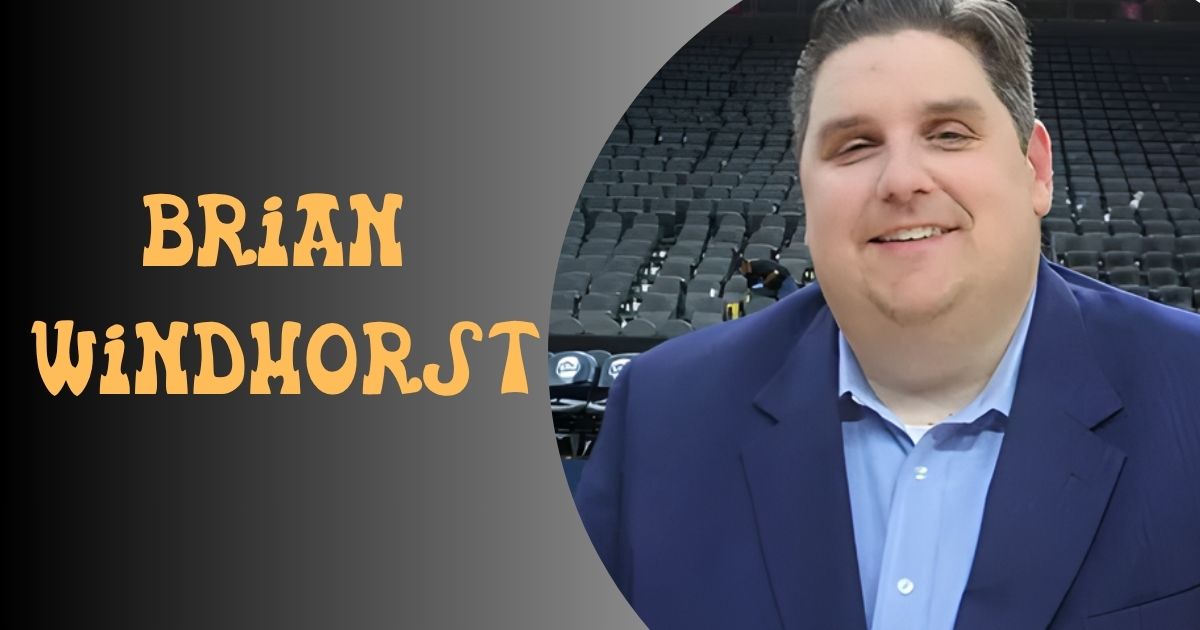You’ve seen him on SportsCenter. You’ve heard his voice dissecting LeBron James moves. Brian Windhorst has become synonymous with elite NBA coverage. His viral moment analyzing potential roster moves turned him into a meme sensation. Yet behind the internet fame lies a serious sports journalist who built an empire covering basketball reporting for over two decades.
Understanding Brian Windhorst’s professional standing matters because he represents the pinnacle of modern sports media success. From his early days at the Akron Beacon Journal to becoming an ESPN heavyweight, his journey shows how expertise translates into financial reward. His annual salary and net worth reflect the value networks place on insider knowledge. This comprehensive guide explores his ESPN contract details, compensation structure, and the income sources that built his wealth heading into 2025.
Brian Windhorst’s Current ESPN Contract
Brian Windhorst operates under one of ESPN’s most lucrative NBA reporter agreements. His contract spans multiple platforms including television, radio platforms, and digital contributions. The network relies on him for breaking news during critical moments like free agency and the NBA Draft. His position as senior NBA writer grants him access to league sources that few journalists possess. The deal positions him alongside personalities like Malika Andrews in the network’s basketball hierarchy.
His current arrangement reflects ESPN’s commitment to premium NBA coverage. The contract includes appearances on flagship shows like NBA Today and Get Up. Brian Windhorst maintains flexibility to host the Hoop Collective podcast while fulfilling media appearances across the network. His role expanded significantly after his viral moment discussing front office moves became cultural phenomenon. ESPN recognizes that his NBA insider status drives both ratings and credibility during crucial offseason reporting periods.
Contract Duration and Terms
Brian Windhorst signed his latest contract extension through the 2024-2025 NBA season with options extending into 2026. The multi-year deal includes performance incentives tied to exclusive breaking news reports and media appearances. Unlike shorter 2-4 year deals common for emerging talents, his arrangement reflects veteran status. The contract guarantees his presence during critical events like NBA Finals and Summer League coverage windows.
His terms allow participation across all ESPN properties without additional negotiations for each appearance. The flexibility clause permits external speaking fees and book deals that supplement his base compensation. Brian Windhorst negotiated rights to maintain his Hoop Collective podcast as a signature platform. His contract structure mirrors deals offered to other elite NBA analysts but includes unique provisions for LeBron James coverage exclusivity.
Salary and Compensation Structure
Brian Windhorst’s annual salary ranges between $1 million to $2 million according to industry estimates for 2025. His base salary forms the foundation but appearance bonuses add substantial income during playoff runs. ESPN compensates him for each SportsCenter segment and NBA Today appearance beyond contractual minimums. The compensation structure includes performance metrics tied to viewer engagement and social media impact during free agency periods.
Breaking down his earnings, the base salary accounts for approximately 60% of total compensation from ESPN alone. Appearance bonuses during high-profile events like NBA Finals coverage can add $100,000 to $250,000 annually. His contract includes provisions for digital contributions that pay separately from television work. Compared to peers, Brian Windhorst earns competitive rates though slightly below what Adrian Wojnarowski commanded before his departure.
| Income Component | Estimated Annual Amount | Percentage of Total |
| Base Salary | $900,000 – $1,200,000 | 60% |
| Appearance Bonuses | $200,000 – $400,000 | 25% |
| Podcast Revenue | $100,000 – $200,000 | 10% |
| Other Media Work | $50,000 – $100,000 | 5% |
Notable Contract Renewals
Brian Windhorst first joined ESPN in 2010 after covering LeBron James at Cleveland newspapers. His initial contract focused on LeBron coverage as the star moved to Miami Heat. The 2012 renewal expanded his role beyond single-player focus to comprehensive NBA coverage. His 2016 extension coincided with LeBron’s return to Cleveland Cavaliers and their championship run.
The most significant renewal came in 2020 when ESPN recognized his pandemic-era reporting value. His analysis of the Orlando bubble and LA Lakers championship coverage elevated his profile dramatically. Contract negotiations in 2022 resulted in his current deal with enhanced digital rights. Each renewal increased his annual salary by approximately 15-20% reflecting his growing influence within sports journalism.
Net Worth of Brian Windhorst
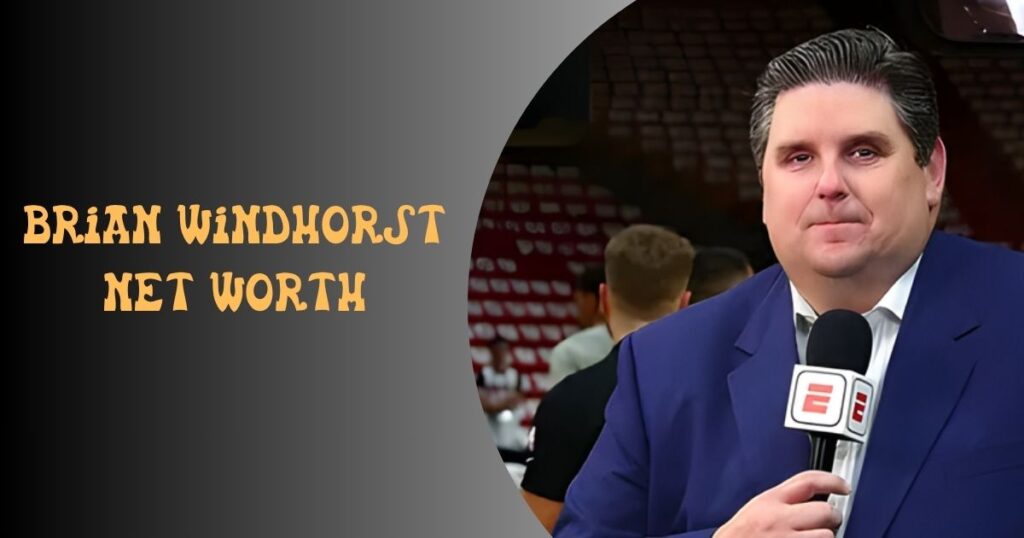
Brian Windhorst’s accumulated wealth showcases how elite NBA reporting generates substantial net worth over time. His consistent ESPN employment since 2010 provided financial stability unavailable to many print journalists. Smart investments and asset accumulation complemented his six-figure income from sports media work. The explosion of NBA popularity and subsequent media rights deals indirectly boosted his earning potential throughout his career.
His early years at Cleveland newspapers laid groundwork despite modest earnings compared to national platform compensation. The transition to ESPN marked a turning point where annual salary increases compounded significantly. Real estate holdings in strategic markets contribute meaningfully to his overall net worth calculations. Brian Windhorst avoided the financial struggles many traditional print journalists faced by successfully pivoting to television and digital platforms before industry disruption peaked.
Related Post: Trevor Immelman – CBS Contract, Net Worth, and Complete Career Analysis
Estimated Net Worth and Earnings
Current net worth estimates for Brian Windhorst range from $3 million to $5 million as of January 2025. His year-over-year earnings progression shows steady growth from 2010 through present day. Industry analysts calculate his net worth by combining ESPN compensation, book deals, and investment returns. His unique LeBron James connection elevated earning potential beyond typical NBA reporters without similar access.
Breaking down wealth accumulation reveals how decades of consistent high-income work builds substantial assets. From 2010 to 2015, his net worth grew from approximately $500,000 to $1.5 million. The 2016 to 2020 period saw acceleration reaching $3 million as contract renewals increased base salary. Brian Windhorst’s financial trajectory mirrors successful sports journalists who transitioned from print to multimedia before 2015.
| Year | Estimated Net Worth | Primary Income Source |
| 2010 | $400,000 – $600,000 | ESPN Base Salary |
| 2015 | $1.2 million – $1.8 million | ESPN + Media Work |
| 2020 | $2.5 million – $3.5 million | ESPN + Podcast |
| 2025 | $3 million – $5 million | Multiple Streams |
Sources of Income Beyond ESPN
Brian Windhorst generates substantial revenue from the Hoop Collective podcast which attracts significant listenership during NBA season and offseason. Podcast advertising and sponsorships contribute estimated $100,000 to $200,000 annually. His book deals and publishing royalties from previous works about LeBron James provide passive income streams. Speaking fees at corporate events and sports conferences add another $50,000 to $100,000 yearly.
Media appearances beyond ESPN properties occasionally supplement his earnings though his contract limits outside work during peak season. Brand partnerships with basketball-related companies provide endorsement opportunities unavailable to less prominent journalists. Brian Windhorst monetizes his expertise through occasional consulting work for media training and basketball reporting workshops. Investment income from diversified portfolios rounds out his income sources demonstrating financial literacy beyond journalism earnings.
Career Path at ESPN
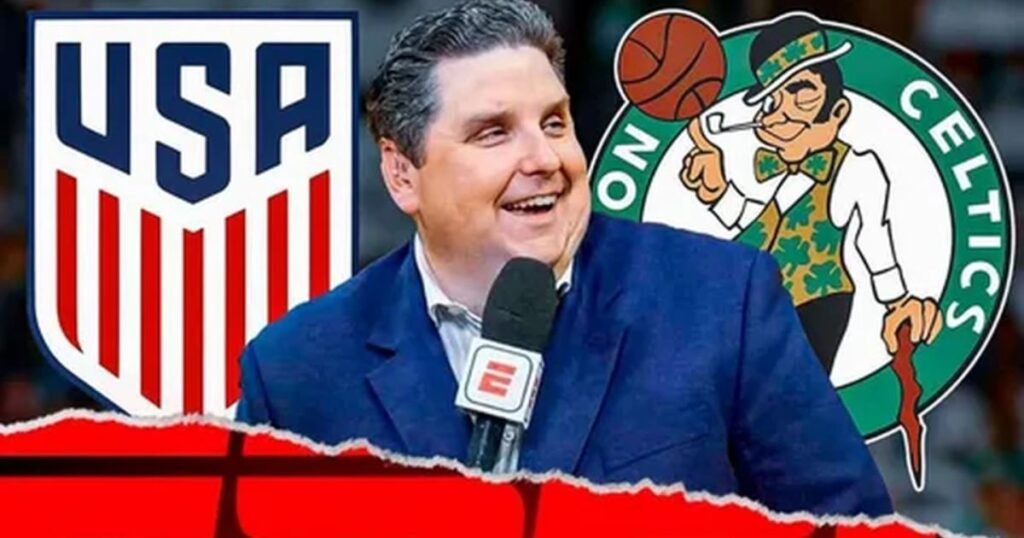
Brian Windhorst’s 2010 transition from Cleveland newspapers to ESPN represented a seismic shift in sports journalism career trajectories. His decade covering LeBron James starting from St. Vincent-St. Mary High School created unmatched insider access. Initial skepticism about his hire focused on whether his expertise extended beyond one player. He systematically proved doubters wrong by developing comprehensive NBA insider knowledge spanning all thirty teams.
His evolution from beat reporter to national television personality required adapting skills beyond traditional writing. The strategic importance of his Cleveland and Akron, Ohio roots provided authentic understanding of small-market team management dynamics. Mentorship from established ESPN voices helped refine his broadcasting style and on-camera presence. Brian Windhorst rode the wave of basketball’s growing popularity as the NBA became increasingly central to American sports culture throughout the 2010s.
Major Milestones and Promotions
Brian Windhorst achieved his first major milestone covering the NBA Finals for ESPN in 2011 when Miami Heat faced Dallas Mavericks. His promotion to senior NBA writer in 2014 formalized his status among the network’s elite basketball reporting team. Expansion into NBA Today as a regular analyst marked his transition from behind-scenes reporter to on-camera personality. Appearances on The Lowe Post podcast elevated his profile among hardcore basketball fans who appreciated analytical depth.
His role grew exponentially after 2020 when pandemic coverage demonstrated his versatility beyond player-focused reporting. ESPN entrusted him with more SportsCenter segments during prime hours as his comfort on camera improved. The viral “something is brewing” moment in 2022 paradoxically enhanced his credibility despite becoming internet fodder. Brian Windhorst now anchors major trade news coverage and free agency speculation programming across all network platforms.
Impact on NBA Coverage
Brian Windhorst fundamentally changed standards for NBA coverage depth and insider sourcing expectations. His approach emphasizes understanding organizational dynamics beyond surface-level roster moves and coaching changes. The “Windhorst effect” occurs when his speculation legitimately moves betting lines and generates widespread social media discussion. Pre-Windhorst NBA reporting focused more on game recaps; his model prioritizes front office moves and long-term strategic analysis.
Networks now seek journalists who can replicate his blend of insider access and digestible television presence. ESPN restructured its basketball department partly around the template he established for year-round coverage. His influence extends to how free agency gets covered as multi-day events rather than simple transaction announcements. Brian Windhorst demonstrated that NBA analysts could become personalities without sacrificing journalistic credibility if they maintained rigorous reporting standards.
Expertise in NBA Reporting
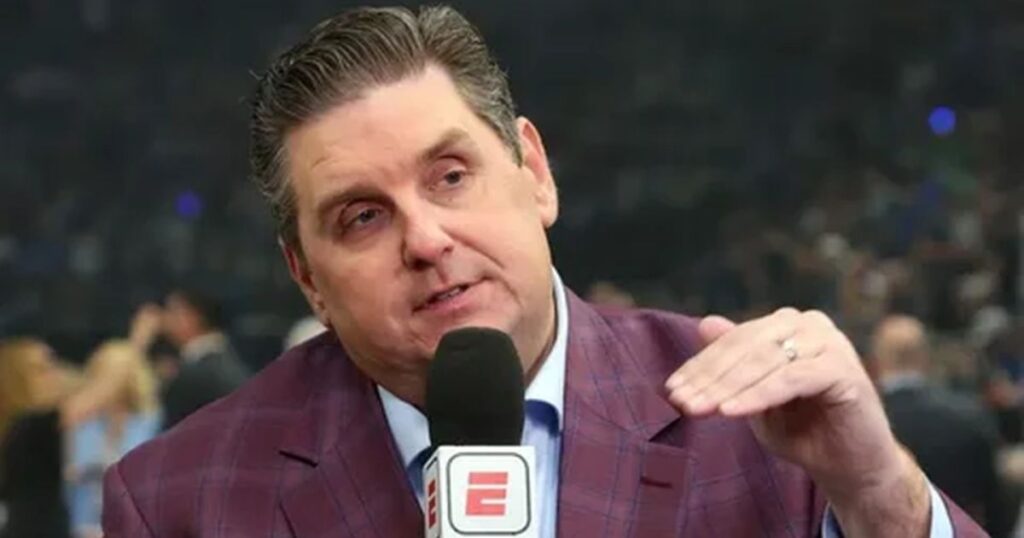
Brian Windhorst earned his reputation as the preeminent LeBron James expert through twenty years of relationship-building and proximity. His ability to read subtext in front office statements and body language sets him apart from surface-level reporters. Decades of cultivating league sources from Akron to Los Angeles created an unparalleled information network. Specific scoops about LeBron’s contract decisions and Anthony Davis trade discussions demonstrated his insider knowledge depth.
His unique understanding of NBA salary cap intricacies and roster construction helps contextualize transactions for casual fans. General managers and agents respect his reporting accuracy and discretion when handling sensitive information. Brian Windhorst’s Cleveland origins provide perspective on small-market team management challenges that coastal reporters often miss. He challenges conventional narratives when his sources indicate reality differs from popular perception among casual observers.
Coverage of Key Events and Stories
Brian Windhorst provided seminal reporting during “The Decision” in 2010 though the televised announcement surprised even him. His subsequent coverage of LeBron James’ Miami Heat years established him as the authority on superteam dynamics. Kevin Durant’s Golden State Warriors signing in 2016 tested his sourcing beyond LeBron-centric stories successfully. Analysis of the LA Lakers’ 2020 championship run showcased his ability to cover roster moves and organizational chemistry simultaneously.
His trade news breaking during deadlines often comes minutes after initial reports but with crucial context others miss. Brian Windhorst excels at explaining cap space implications and future contract ramifications of blockbuster deals. NBA Draft coverage highlights his relationships with front offices and ability to predict unexpected lottery picks selections. Playoff runs receive his comprehensive treatment examining coaching adjustments and player performance under pressure beyond box scores.
Role During the Offseason
Brian Windhorst dominates NBA news cycles during offseason months when casual interest typically wanes but hardcore fans crave information. His free agency coverage strategy involves cultivating sources during quiet periods before July when deals materialize. Summer League appearances in Las Vegas keep audiences engaged with prospect analysis and veteran player workouts. He generates storylines from subtle organizational changes like assistant coaching hires that signal strategic shifts.
Offseason reporting requires different skills than game coverage as news flows sporadically and requires constant source maintenance. Brian Windhorst excels at reading organizational tea leaves from minor front office reshuffling and cap space maneuvering. His ability to maintain audience engagement when games aren’t played demonstrates his value to ESPN beyond reactive reporting. Trade rumors and contract extension speculation fill content gaps while providing substantive analysis rather than empty hot takes.
Influence on Player Option Analysis
Brian Windhorst established authority predicting player decisions on contract options through careful organizational dynamics observation. His methodology involves reading situations based on team management relationships and competitive window assessments. Analysis affects fan expectations dramatically as his predictions carry weight beyond typical media speculation. Instances where predictions proved prescient months in advance cement his reputation for understanding player motivations beyond simplistic narratives.
His reporting brings financial literacy to discussions about player option decisions that casual fans often misunderstand. Brian Windhorst contextualizes short-term versus long-term player financial interests including tax implications and endorsement considerations. He factors non-financial elements like legacy concerns and championship windows into option decision analysis. Contract structures in the modern NBA have grown increasingly complex requiring his level of expertise to properly explain.
Key Player Option Predictions
Brian Windhorst accurately predicted LeBron James’ various contract option decisions throughout multiple free agency periods. His call on Anthony Davis declining his option before the Lakers’ championship demonstrated understanding of strategic timing. Chris Paul and Dwight Howard option predictions showcased his ability to analyze situations beyond superstar-level players. Missed predictions on Gordon Hayward taught valuable lessons about overestimating player risk tolerance during uncertain market conditions.
His track record builds credibility with both fans and industry insiders who trust his analysis during speculation periods. Brian Windhorst correctly forecasted Kyrie Irving’s option decisions by understanding personality factors alongside financial considerations. Giannis Antetokounmpo’s contract extension with Milwaukee Bucks represented a prediction win against widespread assumption he’d leave. His reporting on Stephen Curry and Golden State Warriors option dynamics helped fans understand supermax contract complexities affecting competitive balance.
Methods and Insights
Brian Windhorst’s reporting process involves meticulous source cultivation across front offices, player camps, and agent networks. He corroborates information through multiple independent sources before presenting analysis publicly on television or podcasts. The balance between informed speculation and confirmed reporting requires careful language choices that protect source relationships. Tools include financial modeling software for salary cap scenarios and historical precedent analysis from similar situations.
His preparation for coverage involves studying team financial situations and roster construction months before options materialize. Brian Windhorst maintains detailed notes on organizational dynamics and coaching staff relationships that inform option predictions. He uses publicly available data combined with insider context to generate insights unavailable through pure analytics. Staying ahead of breaking news requires constant communication with sources even during supposed off-hours and vacation periods.
Analysis of Championships and Impact
Brian Windhorst examines NBA championship runs through organizational construction lenses beyond simple talent accumulation narratives. His framework evaluates championship teams based on roster fit, coaching quality, and front office stability simultaneously. Analysis extends beyond box scores into organizational culture factors that separate winners from talented underachievers. He identifies championship-caliber rosters before playoff runs by recognizing intangible qualities metrics often miss.
His commentary on how championships alter legacy discussions brings historical perspective to current debates about player greatness. Brian Windhorst contextualizes different eras and competition levels when evaluating championship achievements against one another. The value of championships in player evaluation receives nuanced treatment acknowledging both individual excellence and circumstantial fortune. His championship analysis connects to broader understanding of NBA history and how winning teams are constructed across generations.
Commentary on NBA Champions
Brian Windhorst analyzed the Golden State Warriors dynasty as a salary cap exploitation case study in intelligent roster construction. His insights on Milwaukee Bucks’ 2021 title emphasized organizational patience and star player retention over quick fixes. The 2020 LA Lakers championship received treatment examining how veteran leadership complemented superstar talent in unique bubble environment. He distinguishes between championships won through superteam assembly versus homegrown core development with different value judgments.
His perspective on championship windows helps teams and fans understand optimal competitive timing for aggressive moves. Brian Windhorst evaluates what organizational factors separate true contenders from paper rosters that disappoint in playoffs. Miami Heat culture and San Antonio Spurs systems receive credit for sustained excellence beyond individual player talent. Commentary influences how fans and other media evaluate teams’ championship potential before postseason begins.
Reporting on the Lakers’ Successes
Brian Windhorst chronicled the LA Lakers’ 2020 championship in Orlando bubble with comprehensive behind-scenes reporting on team dynamics. His insights into the Anthony Davis trade explained how aggressive front office moves enabled rapid championship construction. Analysis of subsequent struggles emphasized roster construction mistakes and coaching changes that squandered competitive windows. Ongoing coverage of LeBron James’ final years in purple and gold examines legacy implications and organizational direction.
The Lakers’ salary cap mismanagement received critical examination from Brian Windhorst when obvious mistakes created roster imbalances. He reported tensions between front office factions regarding roster moves and coaching staff decisions impacting performance. Trade deadline failures and missed free agency opportunities got contextualized within organizational dysfunction narratives. His reporting balances respect for LeBron’s accomplishments with honest assessment of team management failures limiting sustained success.
Personal Background and Achievements
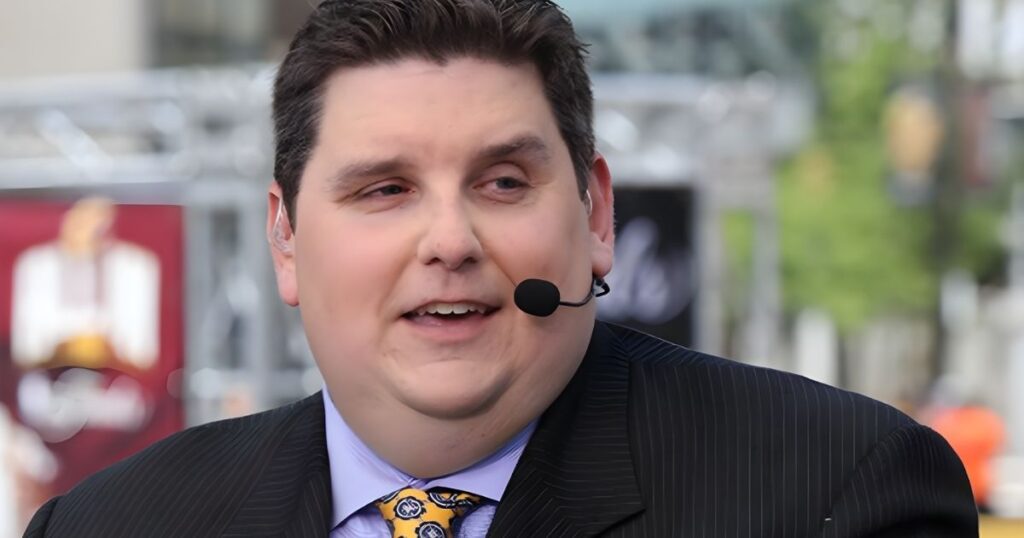
Brian Windhorst grew up in Akron, Ohio surrounded by basketball culture that shaped his lifelong passion. His proximity to LeBron James at St. Vincent-St. Mary High School provided unique access that launched his journalism career. Family background emphasized education and hard work though no direct connections to sports media existed initially. Personal characteristics including persistence and genuine basketball knowledge helped build source relationships over decades of dedicated coverage.
His evolution from awkward early television appearances to confident NBA Today analyst required overcoming significant public criticism. Initial broadcasting struggles included on-camera discomfort and delivery issues that improved through practice and mentorship. Brian Windhorst developed authority despite facing appearance-based criticism that had nothing to do with reporting quality. His personal journey embodies perseverance themes relevant to anyone facing obstacles in competitive professional environments.
Education and Early Career
Brian Windhorst attended Kent State University where he studied journalism and developed foundational reporting skills. His college work included covering Kent State athletics which provided initial experience in sports journalism. The Akron Beacon Journal hired him to cover LeBron James at St. Vincent-St. Mary High School before NBA career began. This assignment proved career-defining as he became the authoritative voice on basketball’s next generational talent.
Transition to Cleveland Plain Dealer represented a promotion allowing continued LeBron coverage at professional level with Cleveland Cavaliers. Those formative years established reporting habits and source cultivation techniques that serve him today at ESPN. Brian Windhorst’s early career demonstrates how specialized expertise in specific players or teams can launch broader opportunities. The relationship built with LeBron during high school created foundation for twenty-plus years of connected coverage.
Awards and Recognitions
Brian Windhorst received multiple journalism awards throughout his career though he rarely publicizes specific honors. Peer recognition from other journalists and NBA executives validates his reporting accuracy and professional conduct. His impact on sports journalism pedagogy means aspiring reporters study his career trajectory and reporting methods. ESPN internally recognizes his contributions through continued contract renewals and prominent platform assignments.
Industry respect extends beyond formal awards to influence he wields when other journalists cite his reporting in their work. Brian Windhorst’s legacy involves changing reporting standards for NBA coverage emphasizing year-round engagement over reactive game recaps. His mentorship of younger journalists through example rather than formal programs shapes next generation approaches. The viral meme status paradoxically enhanced rather than diminished his credibility among serious basketball fans who appreciate analytical rigor.
Conclusion
Brian Windhorst’s journey from Akron newspaper beat reporter to ESPN heavyweight illustrates modern sports journalism evolution. His ESPN contract valued between $1 million to $2 million annually reflects his NBA insider status and multimedia platform presence. With an estimated net worth ranging from $3 million to $5 million in 2025, he exemplifies financial success achievable through specialized expertise and platform diversification beyond traditional print journalism.
His influence on NBA coverage standards extends far beyond personal earnings or contract terms into how networks approach basketball reporting. The combination of LeBron James access, salary cap expertise, and organizational dynamics understanding makes him irreplaceable to ESPN’s basketball programming. As the NBA continues growing globally, Brian Windhorst remains positioned to capitalize on increased media interest. Follow his Hoop Collective podcast and NBA Today appearances for insider analysis that consistently delivers valuable context beyond surface-level reporting available elsewhere.

